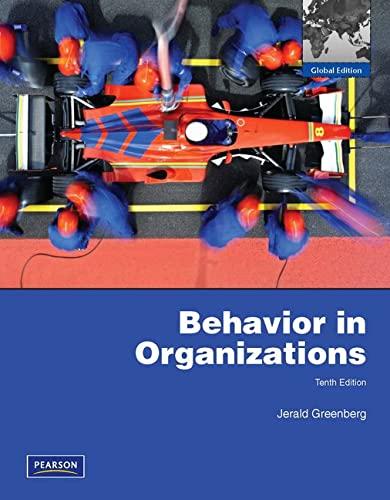ach July, bicyclists race across the French countryside in the Tour de France. The race, first run
Question:
ach July, bicyclists race across the French countryside in the Tour de France. The race, first run in 1903, now consists of about 180 of the world’s best cyclists, who meander through tiny villages, up and down steep mountain grades, and after a grueling 3,407 kilometers (slightly over 2,117 miles), complete their 23-day-long journey along Paris’s famed Champs-
Elysées. To the winner goes €400,000 (currently about US$517,840). For seven consecutive years (until 2009, when Alberto Contador became the official winner), American Lance Armstrong crossed the finish line first, but despite how it may look from the outside, the Tour, as it is called for short, is very much a team sport.
To appreciate the team dynamics, it’s necessary to understand what goes on inside the peloton, a cycling term for “pack”—a picturesque mob of competing teams seen gliding along the route. The complex social arrangements that occur within them belie the bucolic surroundings in which they peddle. As one observer put it, “What appears to be a random mass of bicycles is really an ordered, complex web of shifting alliances, crossed with brutal competition, designed to keep or acquire the market’s most valued currency: energy.”
Pelotons consist of about 20 teams of nine riders, each of whom has a specialty. For example, there are roulers, two or three particularly fast riders who help create drafts for their team’s leader in flat terrain; hill specialists, who have the strength and stamina to support the leader in gaining ground by creating a slipstream (a field of low wind resistance) as they go up mountains; and domestiques, usually new riders who wear shoulder bags to help carry supplies between the team car and various team members.
Together, these individuals have a common objective: to position leaders for a win.
It’s not only members of one’s own teams who work together; sometimes, tiny groupings of enemies from different teams form momentary alliances when race decisions dictate—sometimes hundreds per day. For example, members of two opposing teams riding knuckle-to-knuckle at 60 mph may help one another by cutting temporary deals, each taking turns blocking others through upcoming twists and turns. As longtime Tour commentator Phil Liggett observed, “You have to make friends of enemies.
And just as quickly, enemies of friends.”
Within the peloton, unspoken rules develop. For example, riders may be given a chance to lead the pack, such as when they enter their hometowns (allowing them to enjoy the glory and admiration) and when they go to areas with lots of television coverage (allowing them to please their sponsors).
Cooperation between teams also is important when nature calls. Usually, bathroom breaks (more actually, trips to the woods) occur when everyone agrees they will.
During one race, however, French rider Dante Coccolo took it upon himself to defy the rules. When everyone stopped for a break, he charged ahead. Later, when he took his own bathroom break, some other cyclists grabbed his bike and threw it into a ditch. Slowed down and ostracized, Coccolo’s team had to get him another bike. He finished in next-to-last place that year and never again rode in the Tour.
Lesson learned.
Questions for Discussion
1. What examples of role differentiation are found in this case? To what extent do they help achieve the desired goals?
2. What social norms are illustrated? How do they help each team’s mission, and how are they enforced?
3. Teams of nine are used in this case. Do you think they would be more effective if they were smaller in size, or does the situation dictate the team size used? To what extent would larger teams help or hinder effectiveness?
Step by Step Answer:






